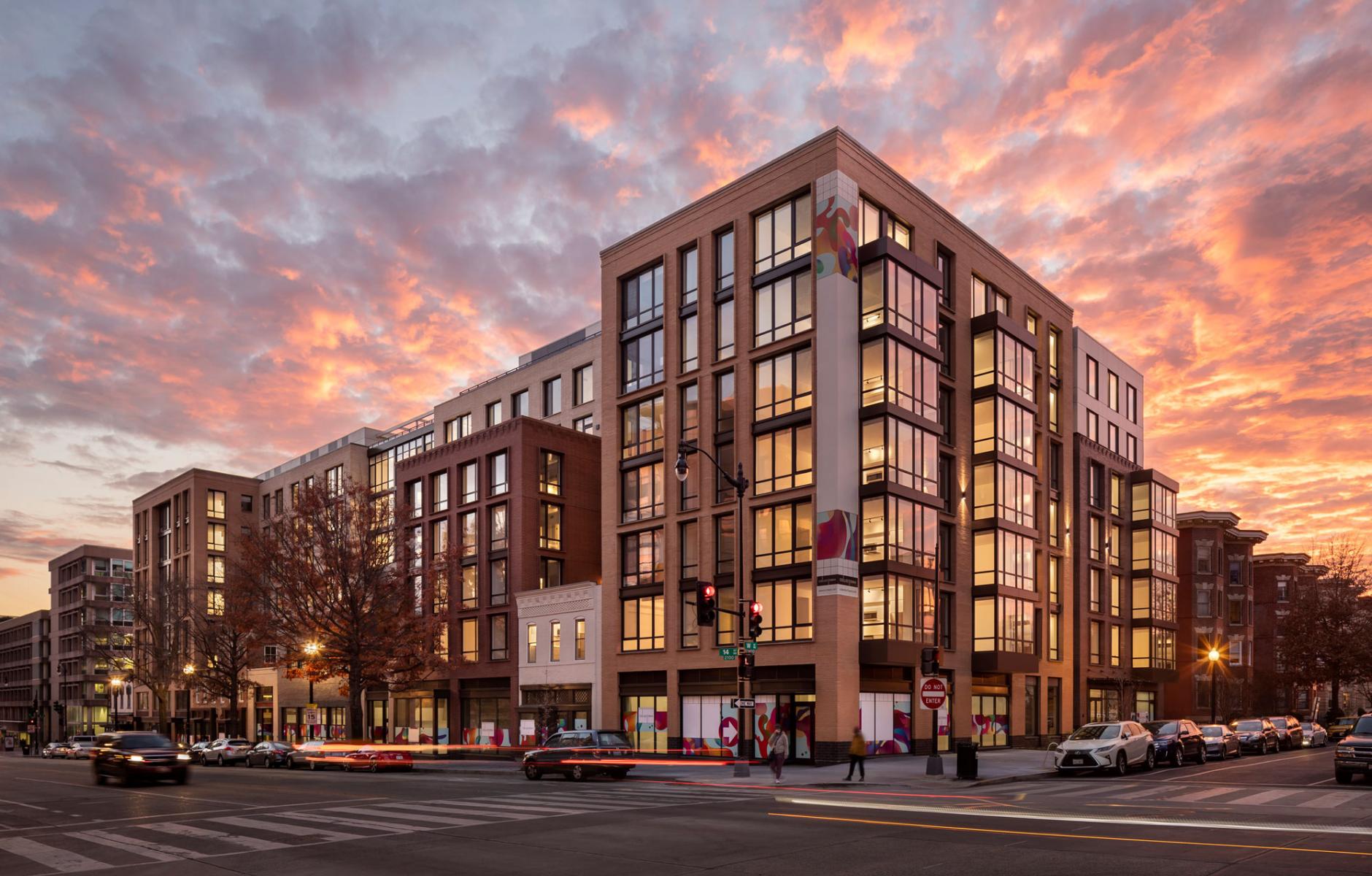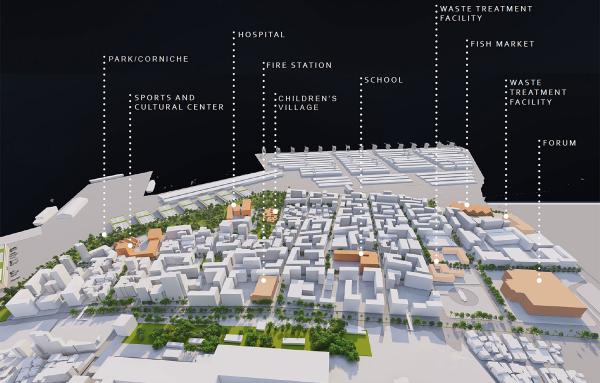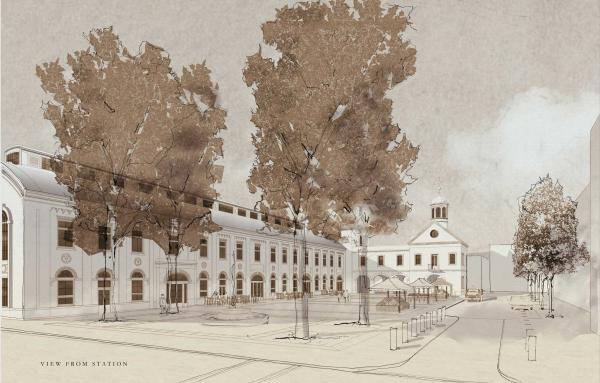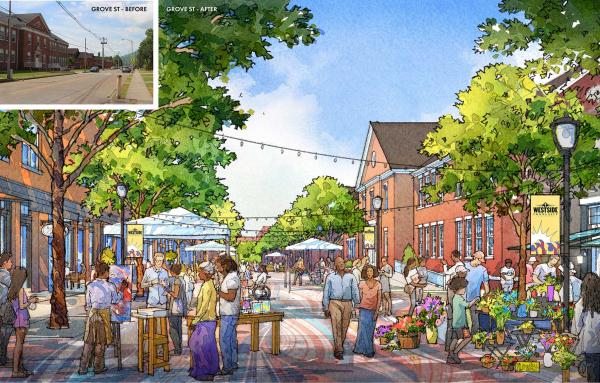
Contextual design and preservation on DC commercial corridor
Collection 14 is a nearly block-length building that incorporates historic main street buildings on the commercial 14th Street corridor in Washington DC. Some developments wipe out existing urban fabric, others preserve facades—but this surgical approach to infill preserves whole buildings and adds on to layers of history.
The project is founded on a detailed analysis of buildings up and down the corridor. The extensive context study and innovative design led to a building that activates the public realm on all sides and conveys authenticity.

Located on a three-quarters-of-an-acre site, Collection 14 includes 25,000 square feet of retail, 6,000 square feet of office, a 3,000 square foot event space, and 233 apartments (studios, one-bedroom, two-bedroom). To achieve this varied program, historic and contemporary architecture is combined in a design that celebrates history and the culture of place.
“The project brings a modern apartment building and ground floor retail to historic 14th Street by weaving together a block of stores of various heights and depths,” notes the policy director for DC’s Coalition for Smarter Growth. “Even the alley is animated with an office use! The design elegantly incorporates the historic facades and works with renewed ground floor retail spaces of various sizes, offering much to the neighborhood, including highly sought meeting space.”

The new residents add to the social and economic life of the corridor, a historic and cultural arts district—but it wasn’t easy to make room for so much on a relatively small site with existing buildings. The project originated as two separate smaller sites, but the design team conceived a strategy for the developer to purchase additional properties—including a defunct gas station—and incorporate historic mid-block structures into the plan. This allowed for additional height, density, and program diversity—including 20 units of affordable housing—while increasing the project’s financial viability.
The final design is bracketed by seven-story buildings on either end of the block, fronting the street, with architecture based on an industrial-warehouse vernacular that was common along the corridor. Vertical windows and other elements of the taller sections complement details on the historic main street structures. In between, the seven-story height is set back, including a section that bridges over a former automotive repair garage—allowing for rooftop arts event space.

Through historical research, the designers discovered elevation drawings of early 1900s storefront designs for three of the existing structures. “These provided inspiration for new storefront designs, helping to restore the historical condition and introduce more variety and human scale to the sidewalk and retail experience,” the design team reports. The design is sensitive to the context and spirit of the place, deriving new facade increments based on the 20-foot modules of the historic platting, and using a variety of materials and colors that relate directly to the historic district as a whole.
On the sides and the back, Collection 14 becomes more contemporary in design—and yet still responds to the height and scale of nearby residential buildings. Collection 14 “is an excellent illustration of how a larger building can be successfully and compatibly introduced into a context of smaller structures,” notes the deputy preservation officer in the DC Office of Planning.




Collection 14
- Perkins Eastman DC: Principal firm
- Madison Investments: Client
- Ehlert Bryan Inc.: Structural engineers
- EHT Traceries: Historic preservation
- Interface Engineering: Mechanical, electrical, plumbing
- VIKA Capitol: Civil engineers
- Setty and Associates: Lighting
- Perkins Eastman: Interiors and sustainability
2022 Charter Awards Jury
- Andrew von Maur (chair), Professor of Architecture at Andrews University in Berrien Springs, Michigan
- Maria Fernanda Sanchez, Co-Founder and Director of Estudio Urbano in Guatemala City, Guatemala
- Wendell Joseph, Project Planner with Toole Design Group in Boston, Massachusetts.
- Jaime Correa, Director of the Undergraduate Program and Associate Professor in Practice at the University of Miami School of Architecture, Coral Gables, Florida
- Megan O’Hara, Principal, Urban Design Associates in Pittsburgh, Pennsylvania







